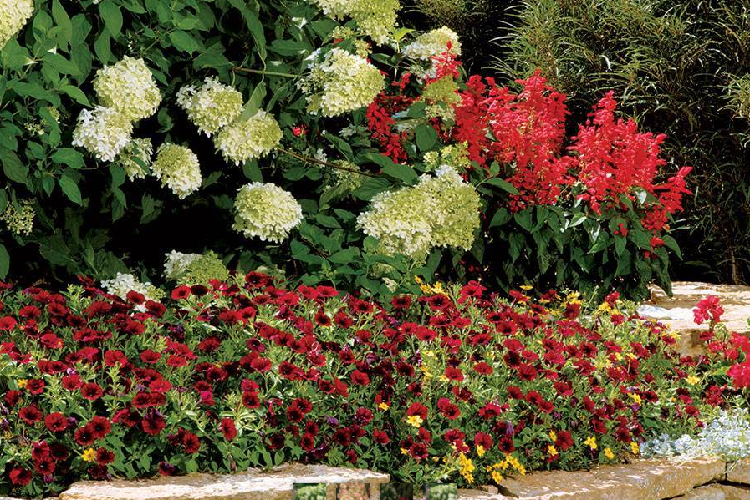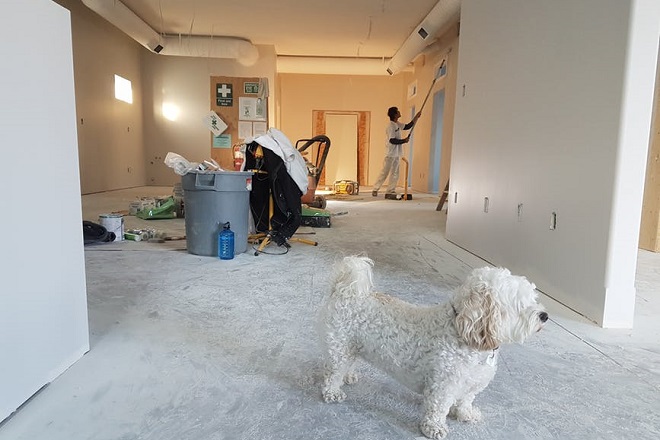Usually, pots and containers are filled with annual plants that are simply pulled after the first frost. The containers are moved to storage until the next year. However, more gardeners like to use trees and shrubs or perennials in their pots and containers. This presents a more difficult problem when it comes time to winterize your plants, especially if you live in colder climates.
There are two things you need to check before you decide how you want to winterize each potted plant. The first is the type of container your plant is in. If the pot is porous and can absorb water, it will very likely not make it through the winter intact. When the pot absorbs water and the temperatures drop to freezing and below, the water in the pot itself will freeze and expand. This force can crack or even break your pot.
Plastic pots and fiberglass pots can usually withstand the freeze. If your plant is in a terra cotta pot or any pot that can absorb water, consider repotting your plant before the freeze. The second thing to check is the hardiness of the plants themselves. Ideally, the plants should tolerate the cold temperatures of no more than two growing zones colder than your location.
In other words, if you live in zone 6, your plants should be able to tolerate the cold of zone 4. Always check your grow zone if you’re not sure to be certain you don’t have any gardening errors.
5 Options for Winterizing Your Potted Plants
If you find your plant is not hardy enough for your grow zone, your only option may be to bring the plant indoors and place it in a sunny window for the winter. If it is hardy, there are options to help maximize the plant’s chance of surviving the winter, including:
Bury the Pot
This is a labor-intensive method, but it will give your plant a lot of protection from the cold and from temperature swings. When it warms up in the winter (the so-called January thaw), your plants can be coaxed to break dormancy.
There is a good chance that any buds or leaves that started to grow will be killed when the temperature goes back to typical winter temperatures. The goal with all these methods is to protect the plant from the cold and also from these fluctuations in temperature.
Dig a hole that is deeper and slightly wider than your pot. Choose an area of your yard or garden that is sheltered, if possible. Put stones or gravel in the bottom of the hole and place your pot on top of the stones. The stones will keep your pot out of the water as the ground thaws.
Fill around and over the top of the pot with garden soil. The soil over the pot should be level with the surrounding soil in the garden. If your pot has perennials that die back with the frost and will not be visible once covered, you might want to add a marker so you can find the container in the spring.
If your container holds a tree or shrub that will be exposed during the winter, you will have to continue with one of the techniques listed next. Remove your plant and pot from the ground as soon as the ground is thawed enough to work in the soil.
Gather Your Pots
If you have several pots that require winterizing or if they are too large to bury, the next best method is to gather them together in a sheltered area. Next to the house, against a fence or along the garden shed will work well. Choose a spot that is out of the sun. Remember that you want your plants to go dormant and stay dormant until spring when the danger of freeze damage is over.
They don’t need a sunny location at this time, and a full southern sun exposure could maximize the effects of temperature fluctuations. Another advantage to gathering your pots together is that you can protect them all at once. Once the ground freezes, cover the entire grouping with straw or other insulating material. You could even add a tarp to hold the straw in place and add another layer of protection.
Insulate in Place
If you have pots out in your garden or yard and would like to leave them in place, you can use the same technique as you would if it was planted in the ground. If your pot contains a miniature rose or a tender perennial that you would normally cover with a mound of soil to protect it, do that. Then, surround the plant and pot with several stakes.
Attach chicken wire or hardware cloth to encircle your potted plant. Fill the enclosure with the insulating material of your choice. Clean straw or even dried leaves will work. You can add another layer of protection by surrounding the outside of the chicken wire with some burlap fabric. This is especially helpful if your location is subject to high winds.
Bring It into the Garage
If you have an unheated garage, this could be the best location for a more tender plant. Your favorite amaryllis bulbs cannot tolerate freezing temperatures, but it’s important to keep the plant dormant until you are ready for it to bloom.
An attached garage usually will stay above freezing all winter but monitor the temperature if there is a stretch of extreme cold. If it gets too cold, move your bulbs into the refrigerator to keep them dormant — and when the temperature in the garage is above freezing, return them to their usual spot in the garage.
Bring the Pot into the Home
Plants like citrus trees have no tolerance for the cold. These plants will have to be moved into a heated environment for the duration of winter. They can only be moved back outdoors when there is no longer a danger of frost and the temperatures are back to the warmth these plants love.
By using these methods, you should be able to successfully help your plants survive the cold winter while keeping them in their pots.




